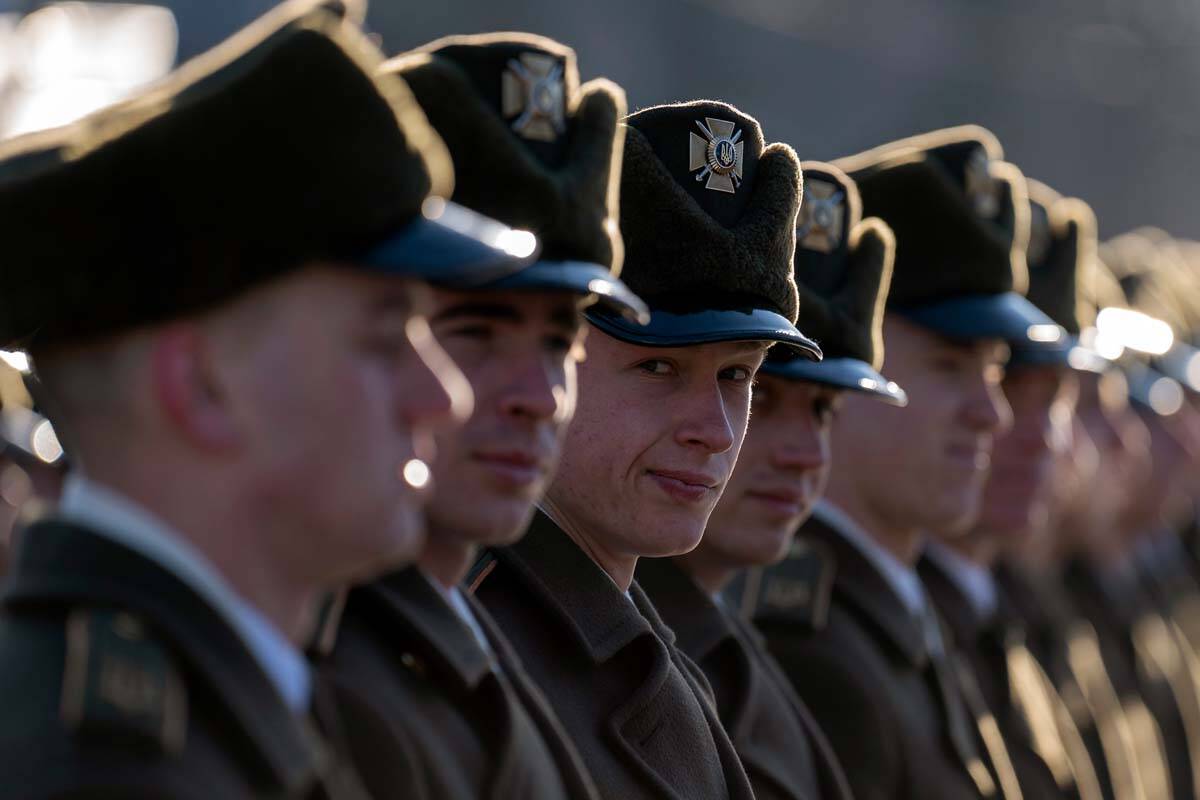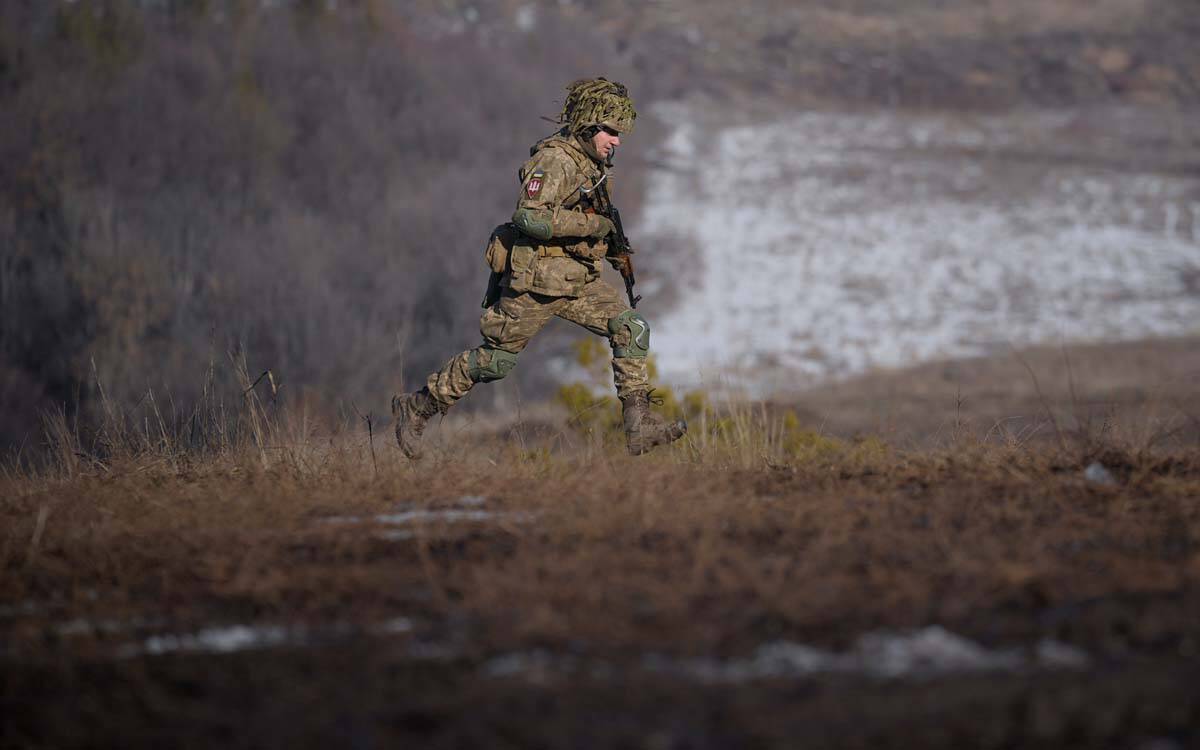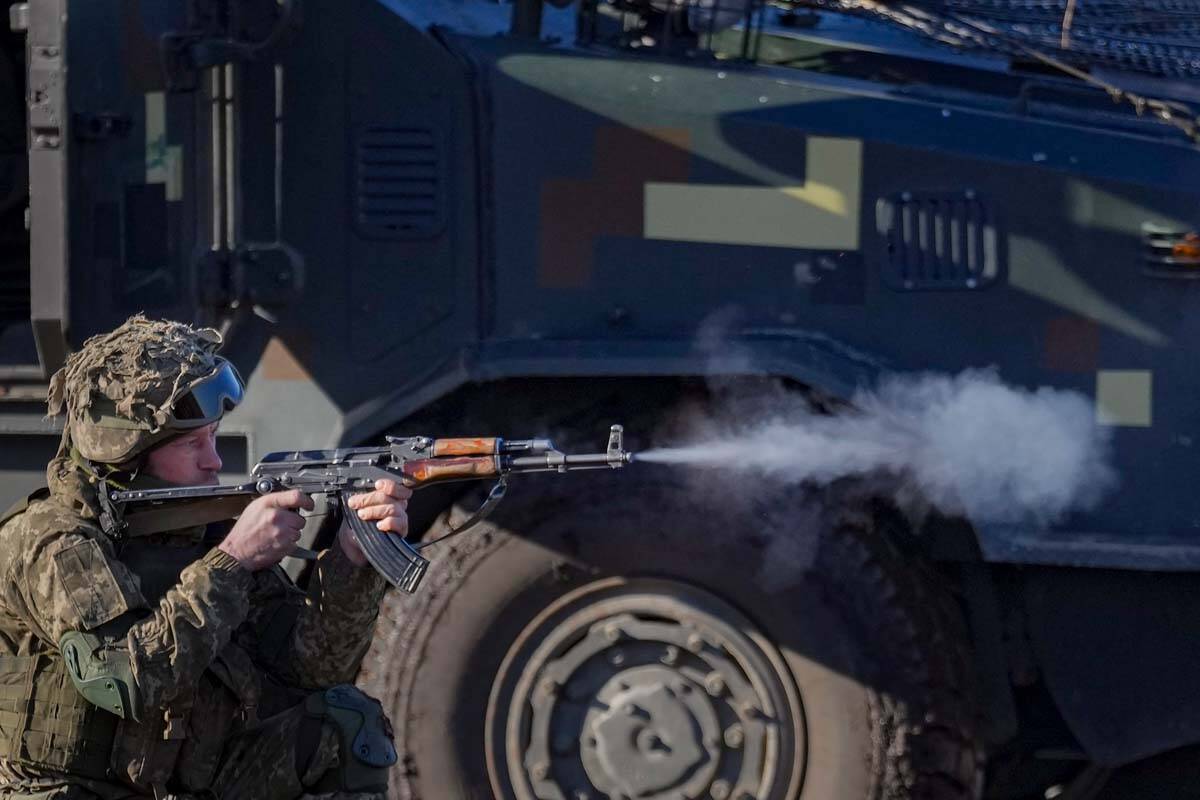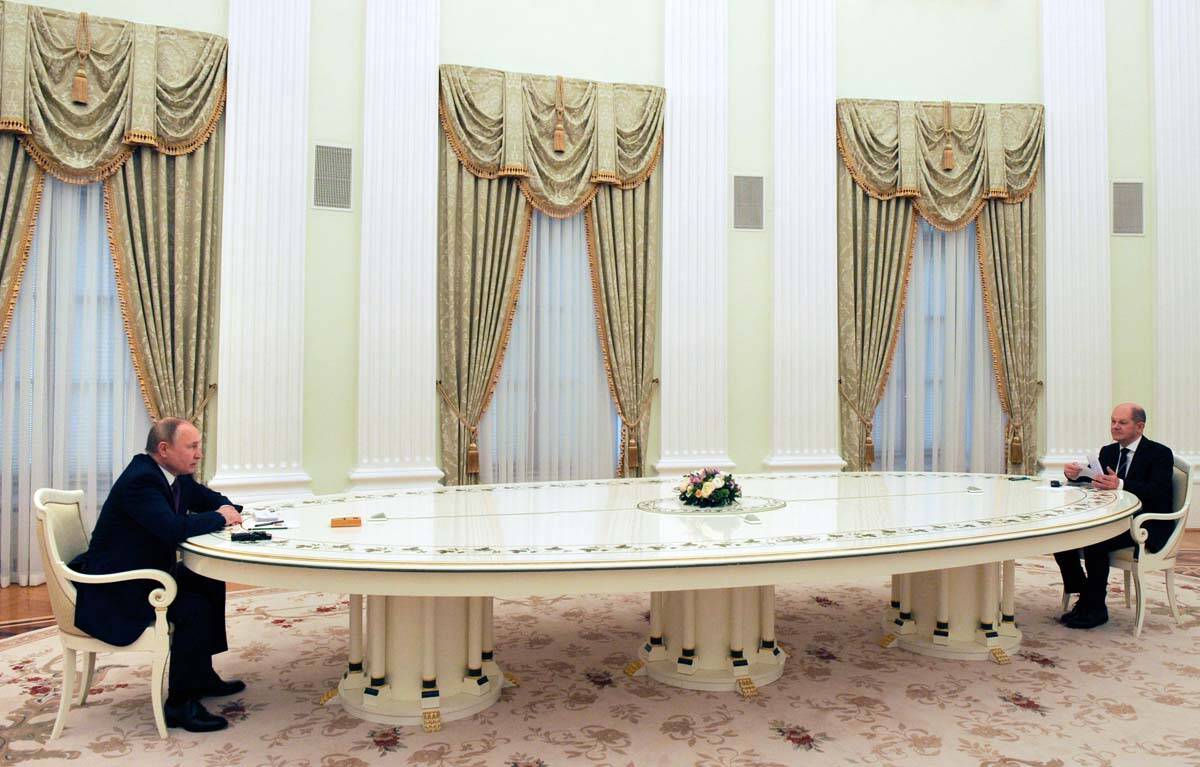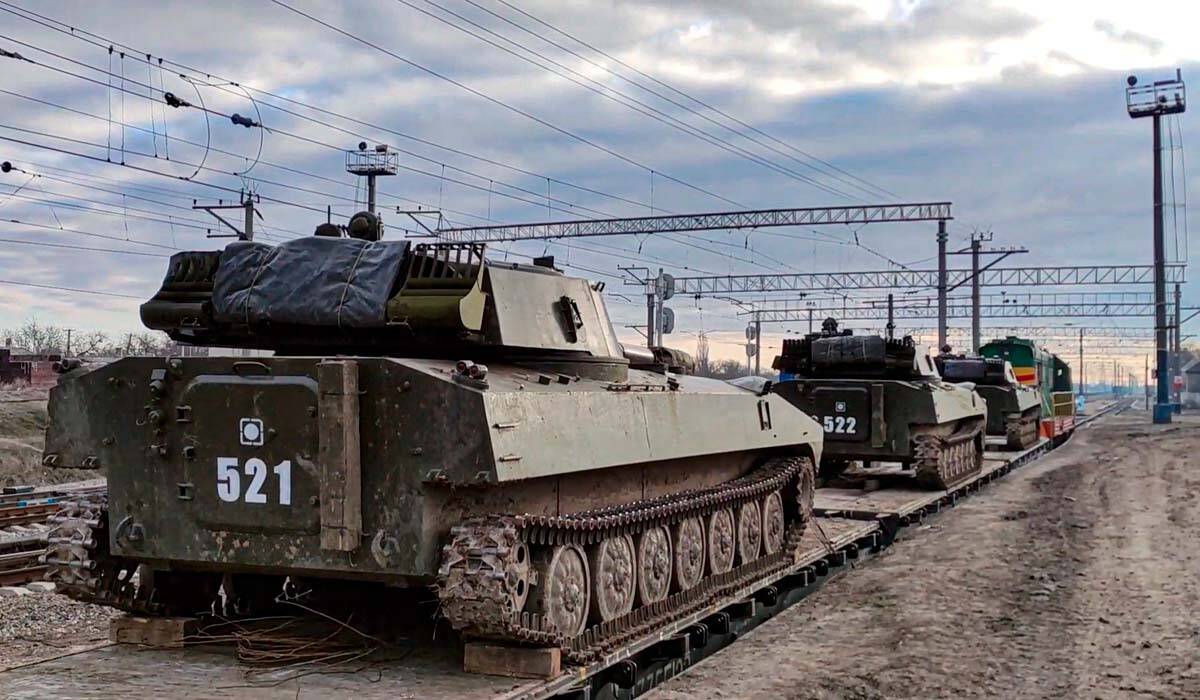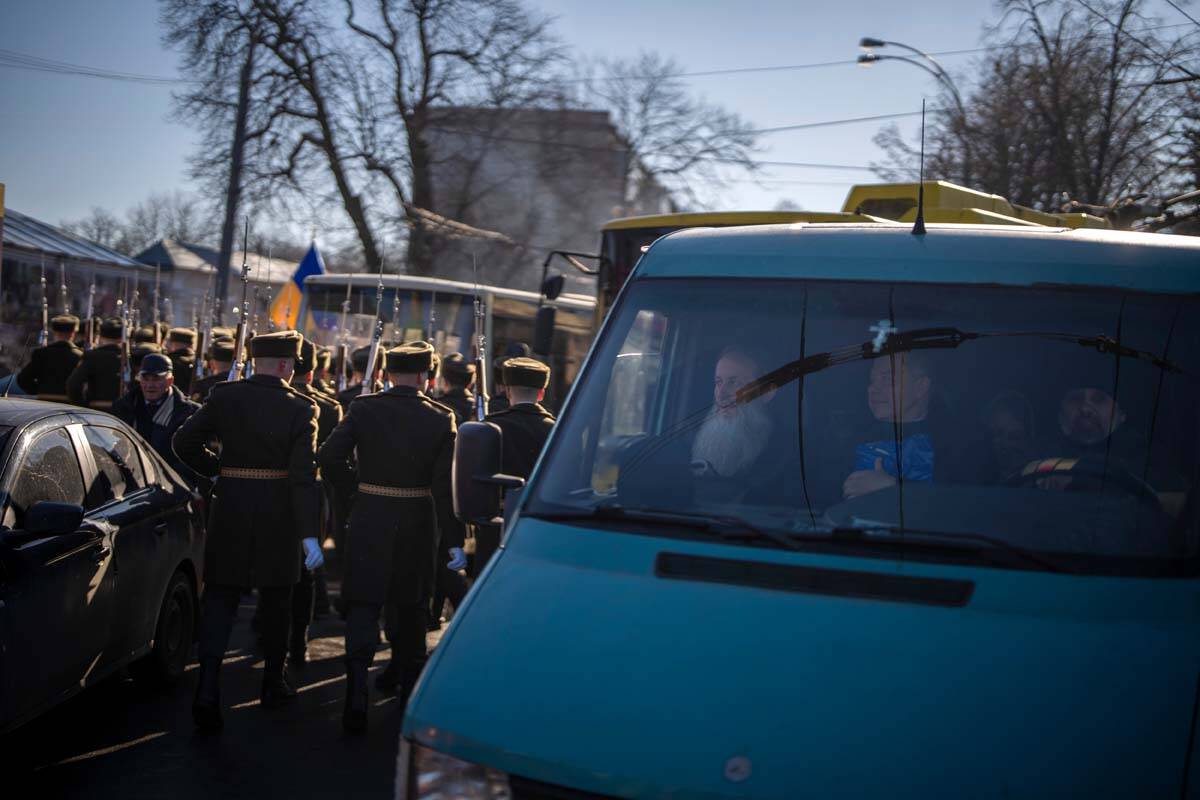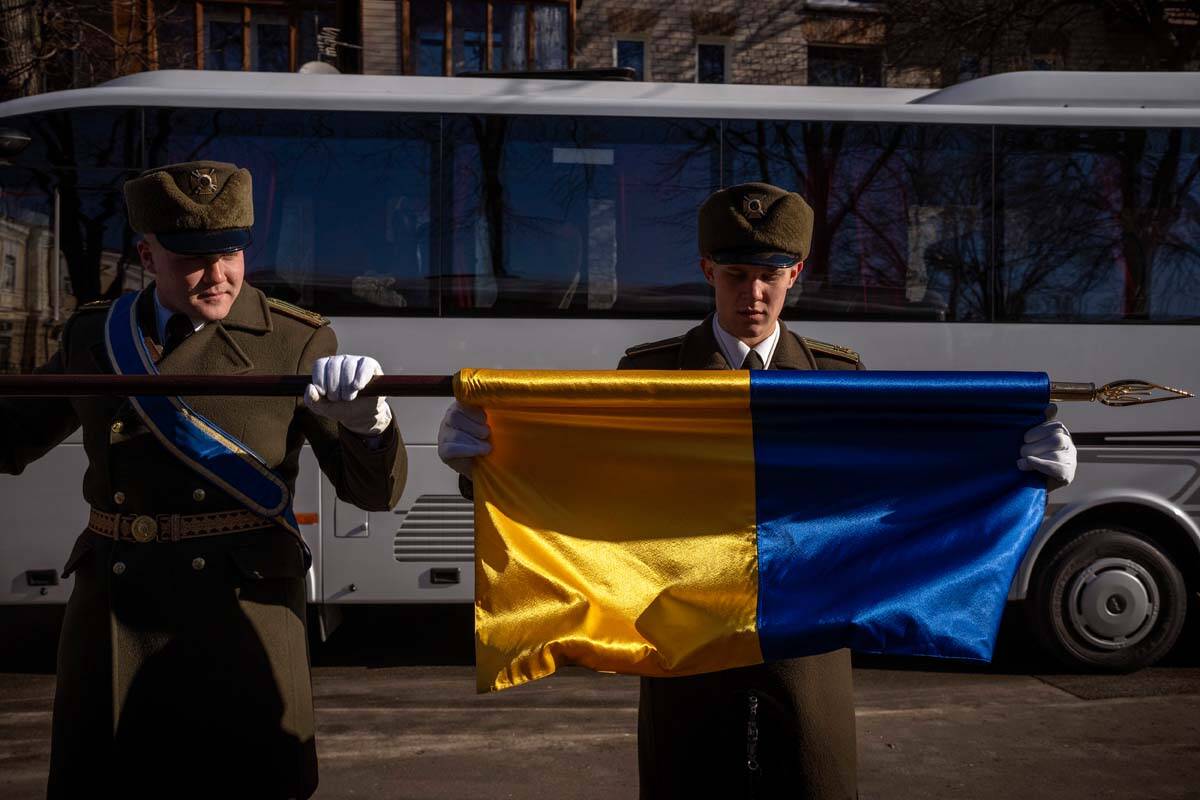Russia to pull back some troops, ready for talks with NATO
MOSCOW — Russian President Vladimir Putin said Tuesday that Moscow is ready for security talks with the U.S. and NATO, as the Russian military announced a partial troop withdrawal from drills near Ukraine — new signs that may suggest a Russian invasion of its neighbor isn’t imminent despite snowballing Western fears.
Putin said he doesn’t want war, and called for “peaceful” discussions over Ukraine’s bid to join NATO, which Moscow sees as a major threat. The overtures from Russia offered possible new impetus for diplomatic efforts to ease the worst East-West tensions in decades, which have put Europe on edge and rattled global markets.
But concerns remain. NATO and Western governments said they had seen no signs of de-escalation yet Tuesday, despite the Russian Defense Ministry’s announcement that it is pulling back forces from maneuvers that had heightened concerns about an invasion. Russia gave no details on where the troops were pulling back from, or how many.
The invasion fears grew after Russia massed more than 130,000 troops near Ukraine in recent weeks and months. Russia denies it has any such plans. U.S. and other NATO allies, meanwhile, have moved troops and military supplies toward Ukraine’s western flank to shore up local governments — although not to confront Russian forces.
The U.S. and NATO have rejected Moscow’s demand to keep Ukraine and other ex-Soviet nations out of the alliance, halt weapons deployments near Russian borders and roll back forces from Eastern Europe. But Western powers have agreed to discuss other security measures that Russia had previously proposed.
Speaking after talks with German Chancellor Olaf Scholz, Putin said Russia is ready to engage in talks on limiting the deployment of intermediate range missiles in Europe, transparency of drills and other confidence-building measures. But he emphasized the need for the West to heed Russia’s main demands.
Asked if there could be a war in Europe, Putin said Russia doesn’t want it. He reaffirmed that Ukraine’s bid to join NATO poses a major security threat to Russia, adding that Moscow won’t be assuaged by Western assurances that Ukraine wouldn’t be able to join the alliance any time soon.
“We need to solve this issue today by peaceful means through a diplomatic process,” he said. “We want our partners to hear our concerns and taken seriously.”
Scholz agreed that diplomatic options are “far from exhausted.”
“That we are now hearing that some troops are being withdrawn is in any case a good signal, and we hope that more will follow,” he said. He didn’t say whether Germany has any evidence that it has happened.
The announcement of the Russian troop withdrawal buoyed world financial markets and the long-suffering ruble after weeks of escalation. It came a day after Russian Foreign Minister Sergey Lavrov indicated the country was ready to keep talking about the security grievances that led to the Ukraine crisis — a gesture that changed the tenor after weeks of tensions.
Moscow brandished Tuesday’s pullback announcement as proof that fears of war were fabricated by a hostile, U.S.-led West: “February 15, 2022, will go down in history as the day Western war propaganda failed. Humiliated and destroyed without a single shot fired,” Foreign Ministry spokesperson Maria Zakharova tweeted.
Yet Ukraine remains effectively surrounded on three sides by military forces from its much more powerful neighbor, and even if the immediate threat recedes, longer-term risk remains. Russia annexed the Black Sea peninsula of Crimea from Ukraine in 2014, and some 14,000 people have been killed in fighting between Ukrainian troops and pro-Russia separatists in the country’s east.
The Russian military released images of armored vehicles rolling onto a train and a tank commander saluting his forces while a military band played. The ministry did not disclose where or when the images were taken, or where the vehicles were headed, other than “to places of permanent deployment.”
A U.S. defense official said the U.S. is aware of reports of Russian claims that they are withdrawing some forces away from the border with Ukraine. The official said Pentagon analysts are reviewing the situation, and have nothing further at this time. The official spoke on condition of anonymity to discuss internal deliberations.
U.S. Secretary of State Antony Blinken held a call with Lavrov, according to a State Department official who spoke on condition of anonymity because the call had not been publicly announced.
Ukraine expressed skepticism about Russia’s statements on the pullback.
“We won’t believe when we hear, we’ll believe when we see. When we see troops pulling out, we’ll believe in de-escalation,” Ukrainian Foreign Minister Dmytro Kuleba said.
In Brussels, NATO Secretary-General Jens Stoltenberg said: “So far, we have not seen … any signs of reduced Russian military presence on the borders of Ukraine.”
However, he added that there are “some grounds for cautious optimism” for diplomatic efforts.
In the past, Russia has moved into areas with troops and equipment and pulled back but left military materiel in place for rapid use later, Stoltenberg said, adding that NATO wants to see a “significant and enduring withdrawal of forces, troops, and not least the heavy equipment.”
Western officials who briefed The Associated Press said they saw no signs of de-escalation but rather the opposite, with Russia continuing to build up combat forces and other capabilities, including field hospitals.
They said there are “some signs of a diplomatic opening” and they believe Putin still has not made a final decision to invade but has all the capabilities in place. Russia is able to keep forces in a state of readiness for some time, which could lead to a protracted crisis
European leaders have scrambled to head off a new war on their continent after several tense weeks that have left Europeans feeling caught between Moscow and Washington, and further pushed up household energy prices because of a dependence on Russian gas.
Scholz’s Kremlin meeting came a day after sitting down with Ukraine’s leader in Kyiv. In his opening remarks in Moscow, Scholz addressed the Ukraine tensions but also noted Germany’s economic ties with Russia, which complicate Western efforts on how to punish Russia over an invasion.
Foreign Minister Zbigniew Rau of Poland, one of Russia’s most strident critics, met in Moscow with Lavrov, and they discussed how to use the Organization for Security and Cooperation in Europe for to ease tensions.
British Foreign Secretary Liz Truss reiterated the invasion danger still exists. Norwegian Foreign Minister Anniken Huitfeldt issued a similar warning, and Estonia’s foreign intelligence agency said the Russian armed forces could launch an operation “from the second half of February.”
A U.S. defense official said small numbers of Russian ground units have been moving out of larger assembly areas for days, taking up positions closer to the Ukrainian border at what would be departure points if Putin launched an invasion. The official spoke on condition of anonymity to discuss information not publicly released.
Meanwhile, Russian lawmakers urged Putin to recognize rebel-held areas in eastern Ukraine as independent states. The State Duma, Russia’s lower house, voted to submit an appeal to Putin to that effect.
Putin said the motion reflects concerns of people living in eastern Ukraine. He noted, however, that Russia continues to believe a 2015 peace deal brokered by France and Germany should serve as the main vehicle for a settlement of the separatist conflict.
The agreement, which followed Ukrainian military defeats, was a diplomatic coup for Moscow, requesting Kyiv to offer a broad self-rule to the separatist territories. It has been resented by many in Ukraine and its implementation has stalled.
The Kremlin has cast the U.S. warnings of an imminent attack as “hysteria” and “absurdity,” and many Russians believe Washington is deliberately stoking panic and fomenting tensions to trigger a conflict for domestic reasons.
Few Russians expect a war.
In Russia’s Belgorod region about 30 kilometers (18 miles) from Ukraine’s border, residents carried on with life as usual, even as more military personnel have been passing through village streets.
Villager Lyudmila Nechvolod says she’s not worried.
“We are friends with Ukraine. And we are not sure that Ukraine wants war with us. … We are really on the border, we really have relatives here and there, everyone has somebody there (on the Ukrainian side),” she said. “No one wants war.”




